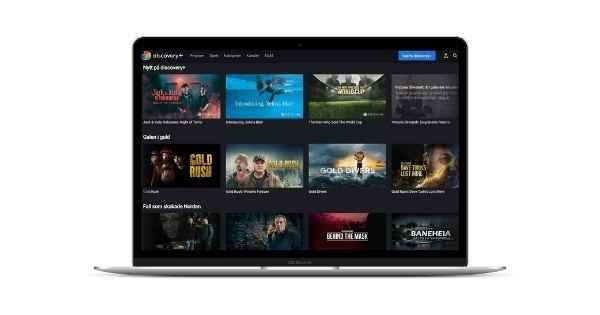Working in PR: The new multitasking reality
What does it mean to work in Public Relations (PR) in the media industry today?
Although PR work has always been demanding and challenging, especially in the media industry where you are dealing with multiple releases, projects and clients at once, these days it is a whole new type of multitasking reality - and here is why.
1. The product is expanding
Far gone are the days of what feels like simple box office competition and TV channel viewership. The introduction of OTT, SVOD, Television on Demand and other streaming platforms has created a whole new type of competition.
In addition, films and television shows are expanding at an exponential rate, with almost all major platforms releasing their own originals featuring some of the world's biggest stars.
According to Insider:
For example, with Amazon Prime Video’s relaunch in the Nordics, the streaming service came in hot with a new original remake of Cinderella starring Camilla Cabello, Idina Menzel and Pierce Brosnan and The Tomorrow War starring Chris Pratt and Yvonne Strahovski.
Even though they are streaming site originals, the promotional activities surrounding these films are equal to if not greater than traditional box office releases.
With so many releases and large catalogues, not only is it a challenge to get awareness and “positive PR” in the media for all of it but the sheer work that goes into effectively promoting every release is becoming almost impossible to keep up with.
2. The definition of “stakeholders” is getting complicated
This brings us to our next point. The amount of programs and films PR teams need to juggle is not the only thing that is expanding. The definition of “stakeholders” has also become more complicated, meaning that there are now even more people to serve.
It’s not just the press that you need to get in front of anymore. It’s the influencers, journalists, bloggers, YouTubers, talent and other individuals or even platforms such as websites or EPGs that can offer your content positive exposure.
In an interview with NENT Group’s Head of Press in Sweden, Susanne Nylén stated that the most significant difference with her job today compared to 5 years ago is:
“The change in the media landscape where social media and influencers are as important as traditional press and journalists.”
She also mentioned that the key to success is dialogue and good relationships with journalists and talent. In order to maintain those good relationships, it is important to stay organised in your communication efforts and be able to serve the correct type of content to each stakeholder.
3. The materials surrounding the product is growing
This brings us to the final point. To top it all off, not only do you need to distribute to more parties, but you have to distribute more materials: trailers, program summaries, images, social media materials, etc.
If you want to be able to get the exposure you need, then you want to make it as easy as possible for those stakeholders to report on your content.
Having to create, find, store and deliver these resources to the correct individuals can be very time-consuming if you don’t have a good system.
Conclusion
PR teams are now given an almost impossible task to promote more shows and films, maintain positive relationships with more contacts and efficiently deliver more materials to the right stakeholders and platforms.
In a data-driven world, PR needs in some way to cover all programs and not just a few premium titles. If you are releasing 100 titles per year or even a month, then the capacity to share and control can become insurmountable.
And with the expanding competition, it is clear that this multitasking reality for PR professionals isn’t going to get any easier anytime soon.
Often times one of the biggest challenges for media organisations is keeping track of their materials and assets spread out over various systems, with contacts in one database, program screeners and videos in another one, and images and descriptions in a third. Not only does a system like this lead to mistakes in data, but it makes it extremely difficult for press teams to do their job efficiently.
Since PR professionals aren’t likely to acquire superhero-like powers any time soon, what solutions are there to help them keep up with the demand and continue to deliver high-quality work?
The answer is, they need a system that can help them streamline their workflow by making it easy for them to keep track of programs they are promoting, access the materials connected to those programs and deliver them to the right stakeholders, or allow stakeholders to access it themselves - all in one interface.
Clipsource helps organisations achieve this with Media Center. A practical and simple tool that helps those working on press teams secure their programmes more coverage by allowing them to create, store, publish and distribute press releases along with rich media in one user-friendly interface.
This is the only tool that is designed to save your team hours of work while streamlining the way media contacts gain access to the materials they need.
Multitasking is not going to go away, but it can get easier with the right tools.
Clipsource has been hired by some of the industry’s finest entertainment brands to enrich and streamline their PR workflow and help them distribute more materials to more stakeholders at a lower cost. Contact us today to learn more about how you can unleash the power of your programs.





